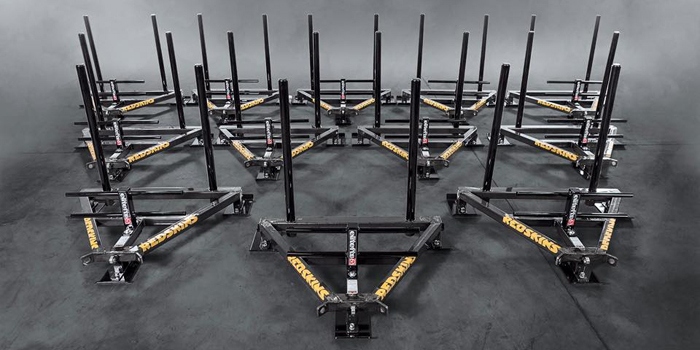
Thank you to Matt Ladewski for bring this article to my attention. Really cool to see EMG data for traditional exercise comparison.
Squat or Sled? Study Compares Muscle Activation During Squatting & Sled Pushing - One For Quads, One For Hams!
by Suppversity
As Meaghan E. Maddigan, Duane C. Button and David G. Behm from the Memorial University of Newfoundland rightly point out, "the back squat is a traditional resistance training exercise." (Maddigan. 2014).
The use of resisted sled exercises, on the other hand, is a relatively new phenomenon of which we don't even know yet how it compares to the classics.
Accordingly, Maddigan et al. set out to compare the muscle activation between squatting and sled pushing on the activity of leg and trunk muscles in ten healthy resistance-trained men in the context of a randomized crossover design study.
The study consisted of 2 preparation sessions and 2 testing sessions. Electromyographic (EMG) activity of the rectus femoris, biceps femoris, gastrocnemius, lower erector spinae, and the transversus abdominis/ internal obliques (TrA/IO) were monitored during a 20-step maximum push with the weighted sled apparatus and a 10 repetition maximum with a bilateral back squat.
All ten subjects were healthy resistance-trained men (age 24.6 years, mass 84.5 kg, height 178.3cm) who had at least 2 years of resistance training and squat experience and were also familiar with performing the sled exercises (however, the volume of squat experiences exceeded sled training volumes or training durations).

| Figure 1: Average root mean square (RMS) EMG recorded in exercise phase 1, 2, and 3 (EMG signal was calculated over a 1-second segment of the concentric contraction phase of each step or repetition) from (A) rectus femoris, (B) biceps Femoris, (C) gastrocnemius, and (D) erector spinae during the concentric portion of the sled and squat exercises. Open circles represent the sled condition, whereas the filled squares represent the squat condition (Maddigan. 2014). |
As you can see in Figure 1 there were nonsignificant trends for the rectus femoris ( p = 0.092: 8.6– 16.7%) and biceps femoris ( p = 0.09: 10.5–32.8%) to demonstrate higher activity with the sled and squat exercises, respectively. A result based on which you could conclude that
- squatting is better for the quads, while
- sled pushing is the better hamstring exercise
Maddigan et al. also observed main effects for condition with 61.2% greater gastrocnemius EMG with the sled exercise ( p = 0.01) and 74.5% greater erector spinae EMG activity with the squat (p = 0.002). For the transversus abdominis/ internal obliques, however, there were no significant differences between the exercises for the.
Bottom line: As the authors write in their conclusion, "the sled and squat exercises provided similar EMG activity for the quadriceps, hamstrings, and ransversus abdominis/ internal obliques." In that the squat may be more favorable for developing the quads, while the sled is the better hamstring activator and calf (gastrocnemius) builder.
As Maddigan et al. say, the decision which of the exercises is "best" for you will depend "on the movement-training specificity of the sport" you compete in. "[E]ither exercise may be used in a training program while acknowledging the differences in gastrocnemius and erector spinae activity." (Maddigan. 2014)
One question remains, though. Will the long-term adaptations reflect the different EMG-activation in the study at hand? To a certain extend this will probably be the case, whether and to which extent you would make better progress with one over the other exercise and if it makes sense to do both (maybe in an A-B workout style) will still have to be elucidated.
References:
- Maddigan, Meaghan E., Duane C. Button, and David G. Behm. "Lower-Limb and Trunk Muscle Activation With Back Squats and Weighted Sled Apparatus." Journal of strength and conditioning research/National Strength & Conditioning Association 28.12 (2014): 3346-3353.
Read the original article here
Source: http://suppversity.blogspot.de








